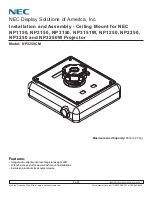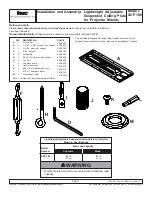
Lucent Technologies 12IR125 Series II Batteries
Issue 7 December 1999
Operation 7 - 7
The easiest test to run is to shut off the ac power and let the plant
load discharge the batteries until 20% to 50% of the capacity has
been removed. The disadvantage of this type of test is that the
current may not be constant throughout the discharge, from
interval to interval, or from site to site. This disadvantage can be
overcome by adding an external load to the bus.
In light of the above, a one-hour discharge similar to the plant
load of a single battery string off-line is the preferred routine
maintenance test. The one-hour discharge rate to 11.4 volts is a
reasonable value since it will leave approximately 60% reserve
at a lower rate. A single-string, off-line, five-hour rate to 10.5
volt discharge test should only be done on those rare occasions
where a very accurate appraisal of the capacity is required. It is
not suggested to be used on a routine basis.
In performing the discharge test, measure the time, current,
battery voltages, and initial battery temperature. Record these
parameters in the “Battery Capacity Measurements” section of
the Installation and Maintenance Record (see Section 10). The
current and time should be measured to 3%, and the battery
voltage should be measured to the nearest millivolt. If a warranty
claim for capacity loss is contemplated, the completed form will
be required.
Recharge After
Discharge
Recharge at the normal float voltage of 13.62 volts per battery.
The recharge should begin as soon as possible after the
discharge.
Boost Charge
Boost charging the 12IR125 batteries is not recommended
without the concurrence of Lucent Technologies. Call 1-800
225-7822 for technical assistance.
During a boost charge, water loss due to electrolysis is greatly
increased. In valve regulated, lead acid cells, frequent or
prolonged boost charges can result in premature failure caused
by cell dry-out. Boost charging at elevated battery temperatures
can be especially detrimental to the batteries.
















































